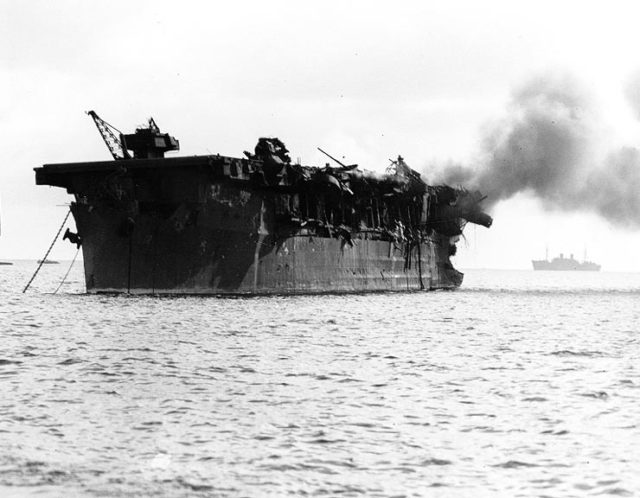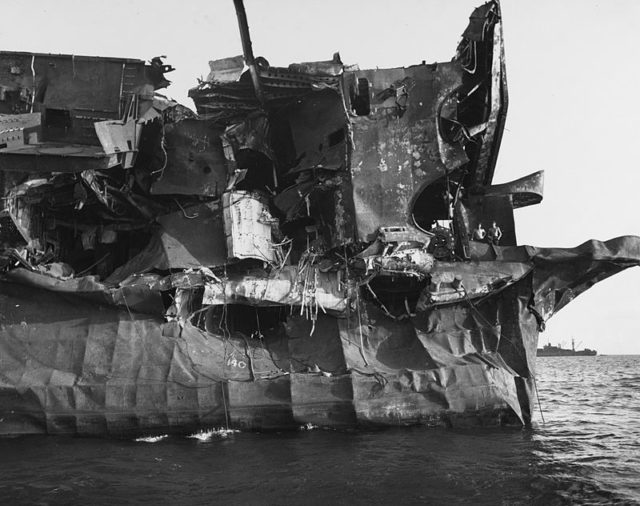Over 6 decades after the USS Independence sank off the Californian coast, the remains of the famous ship have been seen for the first time. The USS Independence was first surveyed by sonar in 2009, but this year marked the first visual study of the wreck.
The Ocean Exploration Trust sent remote-controlled submarines and have released up close and personal pics to the public to check out. Historians are thrilled with the discovery and hope that the ship will reveal even more secrets about WWII.

The Independence was assigned to the Pacific during the Second World War, seeing action in the Battle of Leyte Gulf, and on multiple strike missions against the occupied Philippines and Japan
After the war, the Independence was one of many ships used in the atomic bomb tests at Bikini Atoll. She survived two atomic bomb blasts, and was then towed back to San Francisco for tests.
In 1951, she was loaded with nuclear waste and scuttled off the Farallon islands. The sea around the islands was used as a dumping ground for radioactive waste from 1946 to 1970.

The wreckage is in extremely good condition, with its flight deck and hull clearly visible. Surprisingly, there seems to be a mostly-intact fighter plane in the ship’s hanger bay.
To analyse the sunken ship, a team of savvy technicians accompanied the scientists on a Channel Islands National Marine Sanctuary ship R/V Fulmar. To assist with the operation, the team used a remote underwater vehicle called Echo Ranger, which was manufactured by Boeing.
Images from Echo Ranger revealed damage the ship had sustained from the bomb blasts, and also the natural wear and tear it had suffered on the bottom of the ocean. Despite being sunk stern first, it was the ship’s bow that initially collided with the ocean floor, buying itself in the silt and sediment.

The ship’s hull and contents are still highly radioactive, but the danger of contamination is somewhat mitigated by the water, which is an excellent insulator of radiation.
This shipwreck is only one of the 300 thought to be laying at the bottom of the ocean around San Francisco. The USS Independence is believed to be the deepest of these wrecks.
